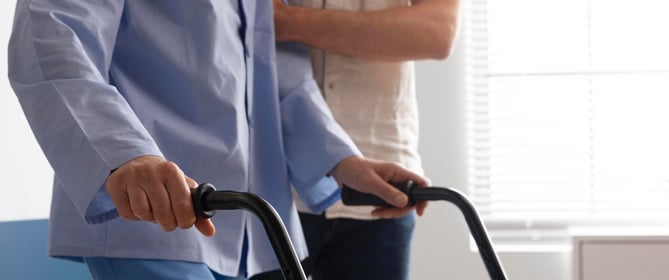Balance and coordination problem in stroke conditions | Role of physiotherapy in its management

Physiotherapy plays a crucial role in the management of balance and coordination problems in stroke patients. Stroke often leads to neurological deficits that affect a person's ability to control their movements, maintain balance, and coordinate their actions. Physiotherapy can help stroke survivors regain function and improve their overall quality of life. Here's how physiotherapy can be beneficial in managing balance and coordination problems in stroke patients:
Assessment: Physiotherapists perform a comprehensive assessment to evaluate the extent of balance and coordination impairments in stroke patients. They identify specific deficits, weaknesses, and limitations in mobility.
Individualized treatment plans: Based on the assessment, physiotherapists develop personalized treatment plans tailored to the patient's unique needs and goals. These plans may include short-term and long-term objectives.
Gait training: Stroke patients often experience difficulty walking and maintaining balance. Physiotherapists work on improving their gait pattern, teaching them how to walk with better stability, and addressing issues like foot drop or hemiparesis (weakness on one side of the body).
Exercises for strength and coordination: Physiotherapy includes a range of exercises aimed at improving strength, coordination, and proprioception (awareness of one's body position). These exercises can target specific muscle groups affected by stroke, helping patients regain control of their movements.
Balance training: Balance exercises are essential for stroke patients, as they help reduce the risk of falls. Physiotherapists may use various techniques, such as balance boards, unstable surfaces, and specific exercises designed to challenge and improve balance.
Functional training: Physiotherapists focus on functional activities that are relevant to the patient's daily life. This may include practicing tasks like getting in and out of a chair, climbing stairs, or reaching for objects.
Neuromuscular re-education: Stroke can disrupt the brain's ability to communicate with muscles, leading to coordination problems. Physiotherapists use techniques to retrain the nervous system and improve muscle coordination.
Assistive devices and adaptive strategies: Physiotherapists may recommend and teach patients how to use assistive devices like canes, walkers, or orthoses to aid mobility and improve balance. They also provide guidance on adaptive strategies for performing daily tasks.
Education and home exercises: Stroke patients and their caregivers are educated about the importance of continuing exercises and strategies at home to maintain progress and prevent regression.
Progress tracking: Physiotherapists monitor the patient's progress over time, adjusting the treatment plan as needed to ensure the best outcomes. They may use objective measures, such as balance assessments and functional tests, to gauge improvement.
Multidisciplinary approach: Physiotherapists often collaborate with other healthcare professionals, such as occupational therapists, speech therapists, and neurologists, to provide comprehensive care for stroke patients.
Overall, physiotherapy is an integral component of stroke rehabilitation, helping individuals regain their independence, improve their balance and coordination, and enhance their overall quality of life after a stroke. The specific techniques and approaches used in physiotherapy will vary depending on the individual's unique needs and the severity of their conditions.


